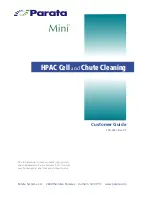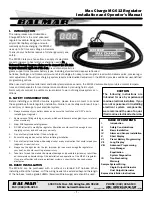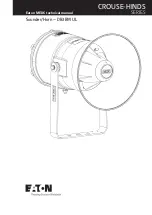
5
Aerosol-tight Applications
Basic Principles
5-2
75003658 TX-200
Thermo Scientific
Basic Principles
•
Check that the sample containers are well suited for the desired centrifugation process.
Placing O-ring
The
O
-ring
fulfills
its purpose best, when it is neither stressed nor bulked. Meaning the
O
-ring shou
ld
be equally placed in the groove of the lid.
Place the
O
-ring as follows:
1.
Place the
O
-ring above the groove.
2.
Push the
O
-ring on two opposite places into the groove. Make sure the rest of the
O
-ring
is
equally
distributed.
3.
Push the centers of the loose parts into the groove.
4.
Push the remaining
O
-ring into place.
Fill Level
The tubes are only to be filled to a level which ensures that the sample is unable to reach the top of
the tube during centrifugation. Therefore
,
fill the tube only 2/3 of the rated level.
Checking the Aerosol-Tightness
CAUTION
When centrifuging hazardous samples, do not open aerosol-tight rotors or
buckets unless placed in a safety cabinet.
Always bear in mind the maximum permitted fill levels.
Be sure to check all seals before starting any aeorsol-tight applications.
Note
If the
O
-ring seems to be too long or too short, take it off the lid and repeat
the process.
The aerosol tightness testing of the rotors and buckets depend on the microbiological test process in
accordance with the EN 61010-2-020 Appendix AA.
Whether or not a rotor is aerosol-tigh
t,
depends primarily on proper handling.
Check as needed to make sure your rotor is aerosol-tight.
The careful inspection of the seals and seal surfaces for signs of wear and damage such as cracks,
scratches and embrittlement
are
extremely important.
Aerosol-tight applications are not possible if the lids are open.
Aerosol-tightness requires the correct operation when filling the sample vessels and closing the
rotor lid.
















































